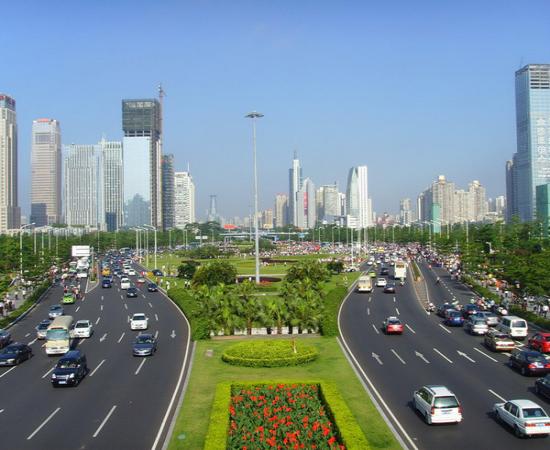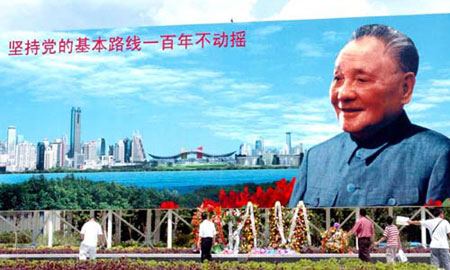Shenzhen industrial zones push forward reform
- By Chris Parker
 0 Comment(s)
0 Comment(s) Print
Print E-mail China.org.cn, November 20, 2013
E-mail China.org.cn, November 20, 2013
|
|
|
The Shenzhen City. [File photo] |
The recently established Shanghai Free Trade Zone has received a lot of attention both within China and abroad, as a welcome step on China's expansion of economic reform, however it is not the only area of the country where economic transformation is taking place.
Shenzhen, in Guangdong Province, just across the border from Hong Kong, has long been a hotbed of economic development and reform, ever since China's modern reformist Deng Xiaoping earmarked the city to become a special economic zone, following his wave of southern inspection visits in the 1980s.
During 30 years of reform and opening up, Shenzhen quickly blossomed into a booming international metropolis, firmly focussed on international trade, and this success is due in part to the establishment of special industrial zones in the city.
One of the most ambitious new pilot zones is the Qianhai Shenzhen-Hong Kong Modern Service Industry Cooperation Zone. The plan for the area was approved by the state council, starting in August 2010. Covering an area of 14.92 square kilometres, it focuses on financial and information services, modern logistics businesses and high tech and professional services.
|
|
|
People stroll before a portrait of the late leader Deng Xiaoping, architect of China's reform and opening up, in a square in Shenzhen, Guangdong Province in this file photo. |
"One of our goals is to build an exemplary financial services zone, which is open to the outside world," said He Zijun, deputy director of the Qianhai Development Bureau. "The zone will be a market based platform, and a test ground for further reform."
Preferential economic policies are not the only key consideration for the region. It also aims to build a comprehensive legal system, to make the zone more attractive to international investors, and increase its cooperation with Hong Kong, which will reinforce its competitive advantages.
"More than 2,000 companies have already set up operations in the Qianhai zone," He said. "The total registered capital investment is already more than 200 billion RMB."
In another part of Shenzhen, the Shekou Industrial Zone is another example of an economic pilot area. When it was first established in the 1980s, it quickly attracted a large amount of manufacturing businesses, transforming the Shekou area of the city.
Today, the zone is undergoing an industrial transformation, aiming to become the "Silicon Valley" of the city. A total of 184 companies have set up businesses there, concentrating on mobile internet, e-commerce and the internet of things. By the end of 2012, the total output value of the zone had exceeded 7 billion RMB.
"In 2009, we established the New Shekou project. The main composition of industry in the zone has moved from the primary industry to secondary and now to tertiary industry," said Yang Tianping, general manager of China Merchants Shekou Industrial Zone Ltd.
The decisions of the recent Third Plenary Session of the 18th CPC Central Committee have highlighted economic liberalization as a key area of reform. "China's reform is going forward step by step. The Shanghai FTZ was an inevitable result of this." Yang said.
It remains to be seen exactly how China's will continue to take shape, but Guangdong Province is likely to continue to play an important role in the changes. As a gateway to Hong Kong and a window on the world, Shenzhen is set to continue at the forefront of China's development.








Go to Forum >>0 Comment(s)